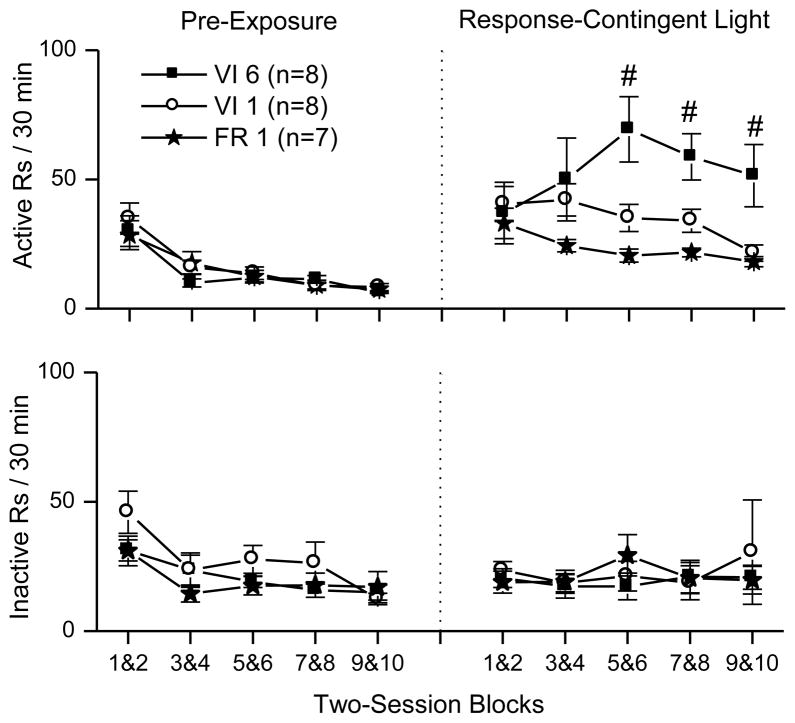Fig. 1.
These plots show between-session patterns of responding during the pre-exposure and testing phases. The measures depicted are active responding (top row), and inactive responding (bottom row). Symbols to the left of the dotted line show responding during the pre-exposure phase, and symbols to the right of the line show responding during the response-contingent light testing phase. Data are plotted as two-session blocks calculated by taking the average of the responding over two consecutive sessions. During the response-contingent light testing phase, light onset was available according to three reinforcement schedules: squares indicate variable-interval 6 min (VI 6), circles indicate variable-interval 1 min (VI 1), and stars indicate fixed ratio 1 (FR 1). Pound signs designate significant Tukey HSD tests (p < 0.05), indicating that the VI 6 group had greater responding than the FR 1 or VI 1 groups during the last three two-session blocks. Data are expressed as means with error bars indicating standard error of the mean.

